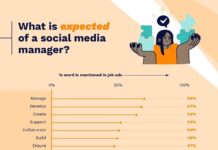With headlines like “#McDStories, McDonald’s Twitter Hashtag Promotion, Goes Horribly Wrong” (Huffington Post), “#McFail: McDonald’s Loses Control Of Hashtag” (Paid Content), and “McDonald’s #McDStories Twitter campaign backfires” (Telegraph), things weren’t looking so good for McDonald’s yesterday in the world of social media. But was all the hype justified – did the #McDStories really spiral out of control with negative backlash?
This morning I spoke with Rick Wion, McDonald’s Director of Social Media, to look at the facts behind this Twitter campaign, and to see what lessons social media managers can learn from the “#McFail debacle” (Paid Content).
McDonald’s Runs a Promoted Trend Campaign
According to Wion, the campaign started with a simple goal: “to tell people where our food comes from.”
McDonald’s – no stranger to managing social media controversies – purchased a Promoted Trend for 24 hrs on Wednesday, January 18, with the aim of driving followers to watch videos about the “proud origins” of McDonald’s food and produce. Starting at midnight, the promotion initially featured the hashtag #meetthefarmers, and this tweet:
[tweet https://twitter.com/McDonalds/status/159794269178179585]
The reaction to the #meetthefarmers tweet was very positive, and farmers even chimed in to share their experiences. Then, at 2pm, McDonald’s switched to feature a new tweet, with a different video and new hashtag–#McDStories:
[tweet https://twitter.com/McDonalds/status/159683796403355648]
Closely monitoring the hashtag, within an hour Wion and his team realized that things were not going as planned, and “changed tacks quickly.” The #McDStories was switched back to #meetthefarmers by 4pm (after just two hours). By 5pm mentions of #McDStories had slowed to just a few dozen.
It would seem that the damage control was effective, and by replacing #McDStories with #meetthefarmers so quickly, the negative tweets slowed down to just a small trickle. To put this in perspective, on January 18th, there were a total of 72,788 tweets mentioning McDonald’s–Wion says the brand normally averages 25,000-30,000 mentions daily on Twitter. Just 1600 of these tweets included the #McDStories hashtag–a small drop in the daily bucket.
Still, some of those tweets were quite nasty, gross and amusing–
[tweet https://twitter.com/Memphidelity/status/161564926857588737]
–enough to gain the attention of some major media outlets.
Admittedly, the campaign did not go as McDonald’s had planned–but on social media, you need to plan for the unexpected. So what lessons can social media managers learn from this controversy?
1. Make a plan, but be ready if that plan goes awry
The main lesson, according to Wion? “You don’t have 100% of control of what happens” on social media, and to participate, brands must be ok with that. McDonald’s is – and will continue to face the good and the bad, the fans and detractors – to maintain an active and engaged social media presence.
Wion told us that “any marketer in social media has to be ready to change course if the plan doesn’t play out as you think.” In this case “the hashtag didn’t go as intended,” but once the negative feedback came rolling in, McDonald’s changed tacks quickly. There “was not a viral response that went out of control,” as much of the media coverage implied, and the number of negative tweets dropped dramatically within just a few hours.
2. Choose your words (and battles) carefully
When choosing language and content for social media posts, he said that the brand thinks about both fans and detractors and is “careful about what we pick.” It’s safe to say that the brand will consider the possibility of a hashtag hijacking next time they create a promoted trend. McDonald’s did not engage directly with the detractors, with the exception of righting a “clearly false” tweet from PETA supporters (addressing a “black and white” issue that Wion said the brand has addressed with PETA in the past).
As for the ensuing storm of media coverage over “#McFail”, there’s nothing the brand can do beyond riding it out. It also helps for the social media team to willingly offer its knowledge from the experience as “a social media parable for marketers” (as PaidContent put it.)
3. Keep the focus on your customers
As a brand, McDonald’s mandate is to focus on its customers, and provide them with entertaining and valuable content on social media channels. The aim isn’t to convince those who aren’t customers to become fans of the brand–it’s to engage those who love McDonald’s and want to hear more. Negative chatter on Twitter is unlikely to convince McDonald’s fans to stop eating there, but providing new and interesting content is a way to keep them coming back.
4. Don’t focus on the negative
As for the trigger-happy media coverage when your brand does have a misstep (such as articles with #McFail in the headline), McDonald’s Rick Wion admits he was surprised by the negative reaction–but the brand doesn’t plan to stop tweeting anytime soon. On the day McDonald’s launched #McDStories, only 2% of the tweets flooding in mentioning the brand were negative. And during the flurry of negative press coverage that followed, the original “When u make something w/pride…” tweet remained in the Top Tweets–not because McDonald’s paid to keep it there, but because it saw consistently high levels of engagement.
Whether you’re a Quarter Pounder with cheese lover or haven’t stepped under the golden arches in years, you’ve got to have respect for the brand’s willingness to put themselves out there, before friend and foe alike. What do you think – should big brands like McDonald’s risk the loss of control that comes with a Twitter campaign like this, or is the potential backlash not worth the exposure?


